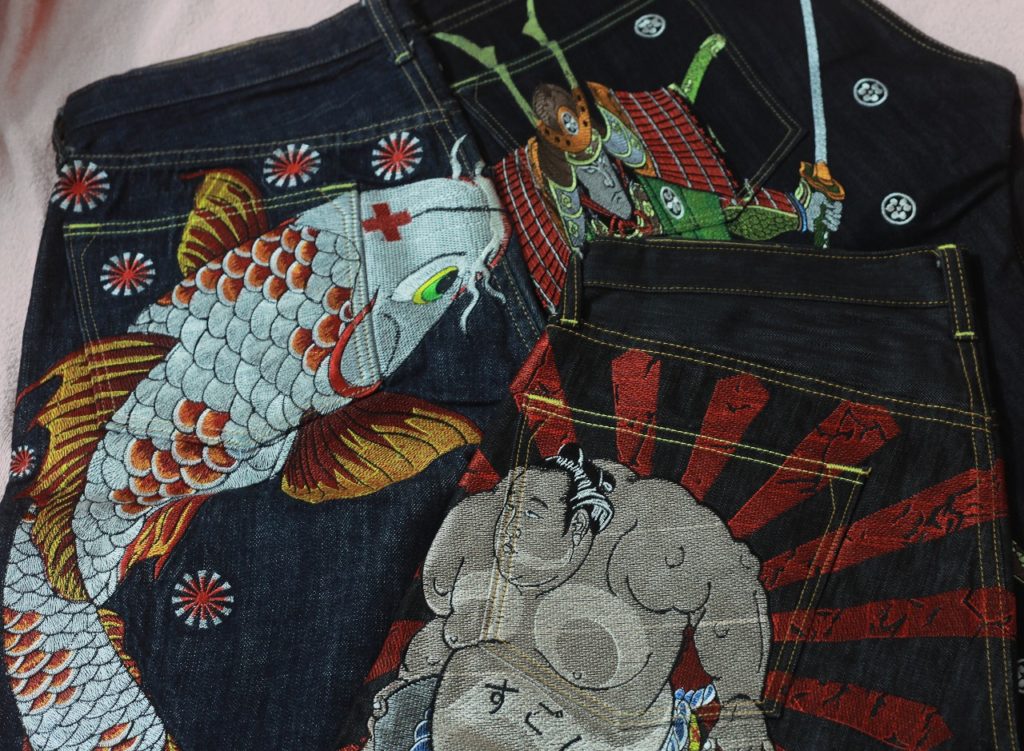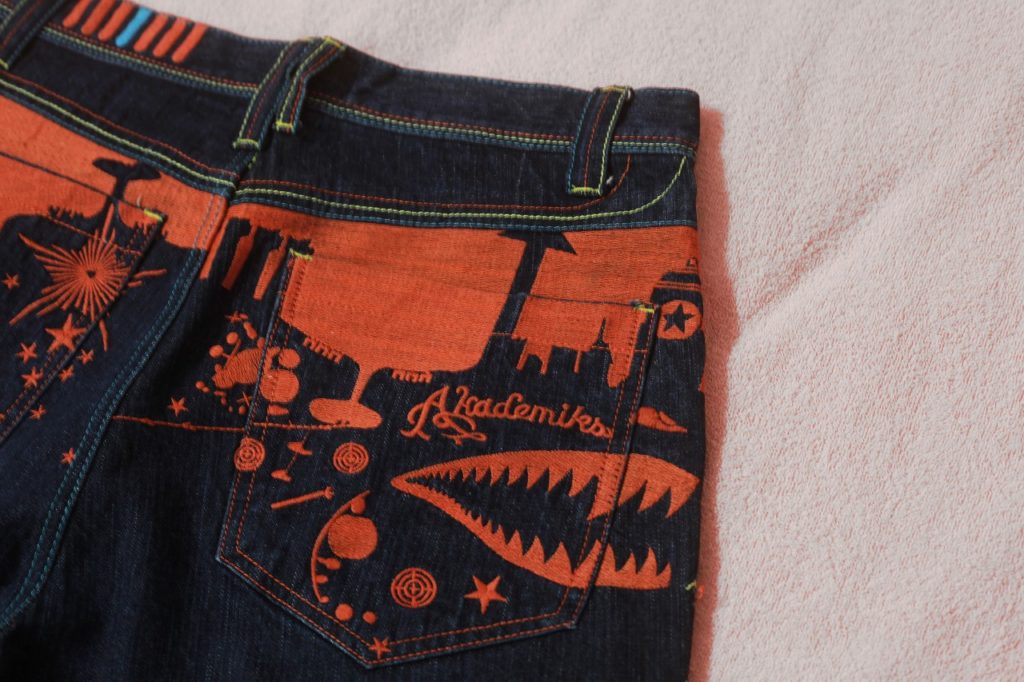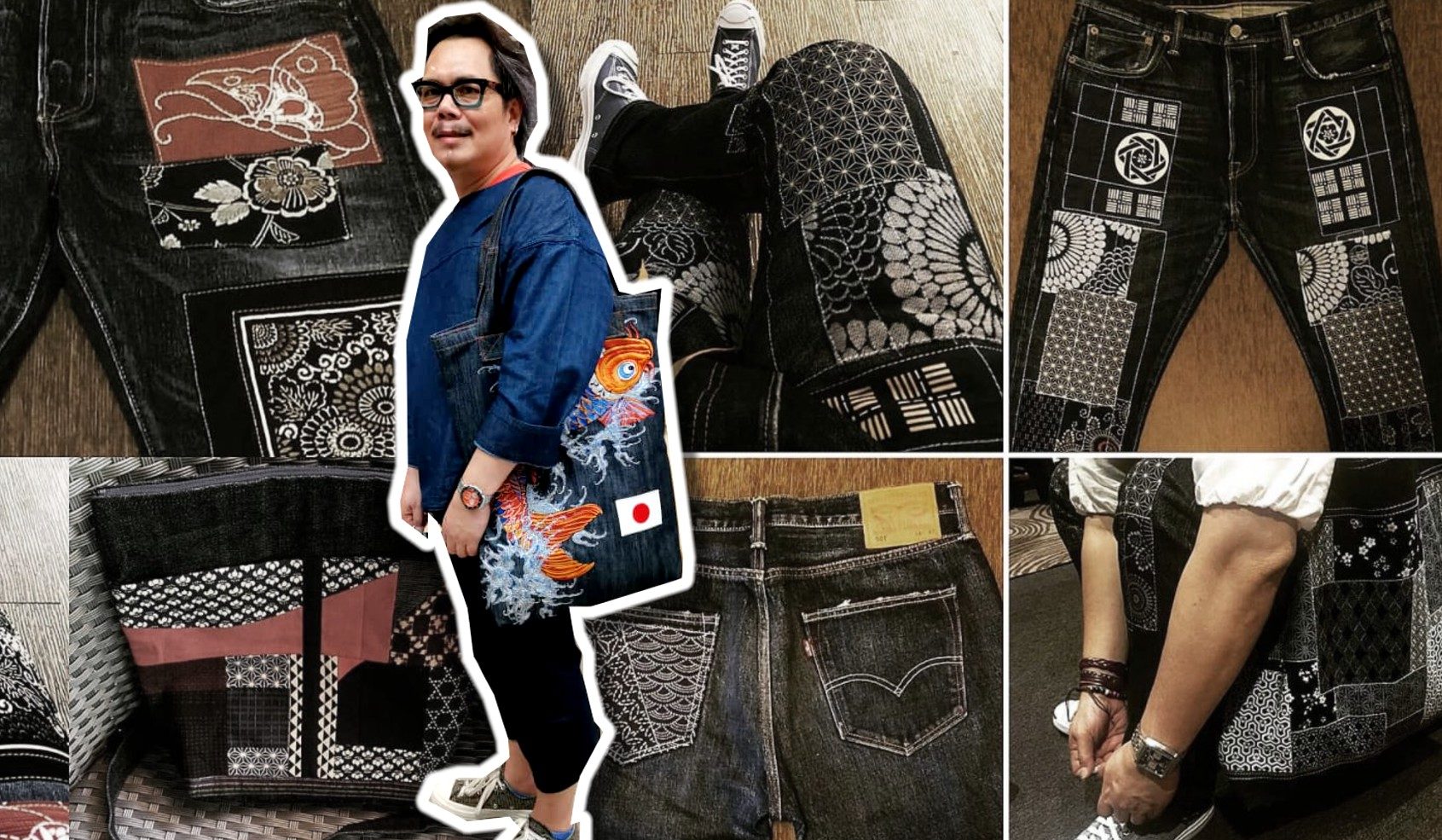“We were all waiting to see which pair you would wear today,” is not something one hears often about a pair of jeans. But it’s a line 58-year-old denim patchwork artist Ruslan Tagan frequently hears.
A former copywriter who has since retired into a life of peace and quiet pinning away patches onto expensive denim, Ruslan says it makes him feel young again. The stylish man is also often seen rocking his stylish pants and Converse shoes in the streets of Kuala Lumpur.
“The climax is when the tailor has stitched the patches onto my jeans and when I look at it, it feels like a mission has been accomplished,” Ruslan shared with Coconuts recently, the excitement and satisfaction clearly showing in his face.
Japanese denim patchwork, also known as Boro, involves the art of mending or patching pieces of denim fabric together. The technique dates back to the early 1500s as a way to extend the lifespan of clothes. Today, it has developed into an art form that appreciates the fabric’s natural wear and tear. Details like dyeing and weight of the fabric can indicate how good the quality is.
In Malaysia, each piece can cost up to thousands of ringgits especially when they come from top Japanese labels like Momotaro, Iron Heart, or Samurai. Much like antiques, the older the piece, the greater its value.

Stroke of ‘jean-ius’
Ruslan’s love for this art form began when he was growing up in the small town of Padang Rengas. While other kids in his primary school dreamt of owning the trendiest bags, Ruslan was fashioning his own, including schoolbags and pencil cases.
The young fashion designer made them using his mother’s sewing machine, much to her chagrin. The equipment, which was regularly used by his mother to make the traditional baju kurung, could not withstand fabric as coarse as denim. But little Ruslan was stubborn and would come home to hog the sewing machine with his rolls of blue denim.
Ruslan sees denim as a blank canvas he could showcase his artwork on. Each work takes several months to complete, starting with the theme, like dragons, samurai, or kabuki theatre, before sourcing the patches.
He is drawn to patterns cut out from Noren door curtains, aprons, handkerchieves, or pillowcases. Such pieces add character to denim when they are upcycled, he said, making every single item unique. He would then lay out pieces of the cut-out and start pinning them together, at times reorganizing them multiple times until he was satisfied. Ruslan then goes to his regular tailor to help him finish the craft, ripping off the seams of his jeans carefully and sewing them back together again with the patterns.
“From time to time, if there is a reason to add more patches, I will do it,” Ruslan said. “Upon finishing a denim piece, I would say it is 85% complete while the other 15% is room for improvement.”
Denim patchwork is an expensive hobby he takes pride in. A pair of selvage jeans can cost up to RM 500 (about US$120) while the patches cost an average of RM200 each. Tailor charges round it off to nearly RM1,000.

800+ pairs of jeans
The proud owner of around 800 pairs of jeans has a whole room dedicated to his collection, which he would take out from time to time to wear. But he rarely cleans his jeans, which is common in the world of denim, where raw jeans develop a natural patina as they age, producing creases and fades – details that serve as marks of authenticity.
When asked how he washes his jeans, he said: “I don’t really wash them.”
Ruslan also noted that his son stopped counting his jeans after reaching 500 pieces.
“I hope I will be able to live longer so as to appreciate the art and craft I have done but ultimately I would be very happy if my children take over and inherit this,” he said.
He added: “At the moment, I’m not really sure what to do because their interests and mine are different. The way I look at it, if they have no appreciation for it, ultimately I might have to sell it. Maybe when I’m 80 and these are no longer appropriate for me to wear, but I will make sure the price is good.”
Ruslan does not sell his patchwork services to make sure he has “something that not many people have.”
Correction: Ruslan currently resides in Kuala Lumpur, not Perak.
Other stories:
Inspired by rom-com, Malaysian man opens online store selling stuff from people’s exes
Here are the night markets open in Kuala Lumpur throughout the lockdown
Kuala Lumpur’s Chinatown goes online ahead of locked down Chinese New Year



